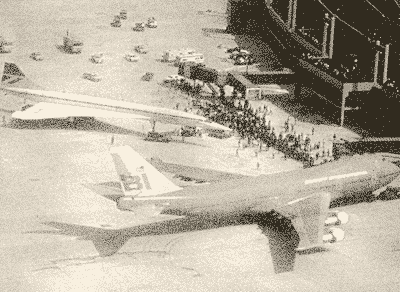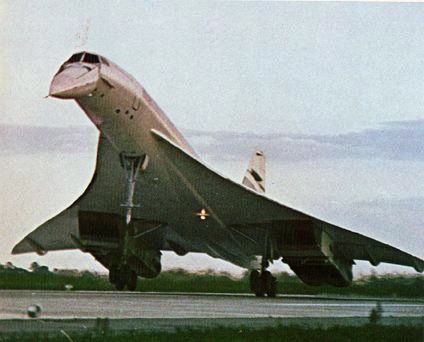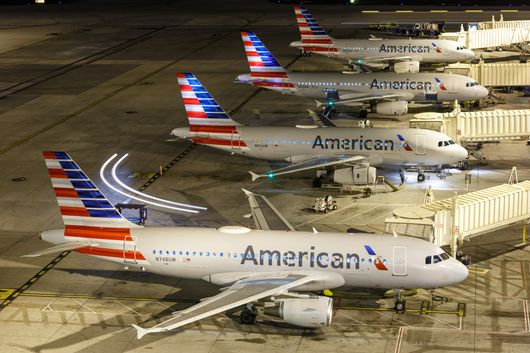Dallas Airport rich and sorted history

Advertisement
Continue Reading About
DallasAirportDFW.com
Dallas Airport History DFW
Dallas and Fort Worth have been talking about constructing a massive airport in the middle that could serve both cities since at least the 1930s. With this in mind, in the 1940s, a tiny airport was constructed quite near to the current site of DFW Airport, only it was utilized by the military. The city of Fort Worth renamed the airport in the 1950s to honor its mayor at the time, Amon Carter Field. The Fort Worth Art Museum was named for the same Amon Carter.
- Dallas Airport Address. Latitude: 33.6366997, Longitude: -84.4281006
- Dallas Airport IATA Code: ATL, ICAO Code: KATL, FAA Code: ATL. | Time Zone: America/New_York (GMT -4:00)
- Dallas Airport is one of the worlds busiest airports in the world.
- Dallas Airport attends to almost 60 million passengers a year and employs more than 30,000 people in Dallas.
- Dallas code Airport has many restaurants, lounges and airline, airport member clubs.
Advertisement
Continue Reading About
DallasAirportDFW.com
[Historic photos were originally published in http://texashistory.unt.edu/ark:/67531/metapth66746/ , Texas Landmark and Legacies, Texas/Dallas History and Archives, Dallas Public Library. All text was used from

As early as 1927, before the area had an airport, Dallas proposed a joint airport with Fort Worth. Fort Worth declined the offer, and thus the two cities opened their own airports, Love Field and Meacham Field. Both airports had scheduled airline service, with both fields being famous for their role in the events of November 22, 1963, before the assassination of President Kennedy. President Johnson took the oath of office on the tarmac at Love Field.Dallas-Fort Worth Airport Opens January 13, 1974
Original image by “Texas Landmark and Legacies”
Advertisement
Continue Reading About
DallasAirportDFW.com

In 1940 the Civil Aeronautics Administration earmarked $1.9 million for the construction of a Dallas/Fort Worth Regional Airport. American Airlines and Braniff Airways struck a deal with the city of Arlington to build an airport there, but the governments of Dallas and Fort Worth disagreed over its construction and the project was abandoned in 1942. After World War II, Fort Worth annexed the site and developed it into Amon Carter Field[8] with the help of American Airlines.
In 1953 Fort Worth transferred its commercial flights from Meacham Field to the new airport, which was 12 miles (19 km) from Dallas Love Field.
Fossilized bones of a marine reptile on display in DFW Central Utilities Plant.
Unearthed while excavating DFW Airport
Advertisement
Continue Reading About
DallasAirportDFW.com

In 1960 Fort Worth purchased Amon Carter Field and renamed it Greater Southwest International Airport GSW in an attempt to compete with Dallas’ airport. GSW’s traffic continued to decline relative to Dallas Love Field. By the mid-1960s Fort Worth was getting 1% of Texas air traffic while Dallas was getting 49%, which led to the virtual abandonment of GSW. The joint airport proposal was revisited in 1961 after the FAA refused to invest more money in separate Dallas and Fort Worth airports. Although the Fort Worth airport was eventually abandoned, Dallas Love Field became congested and had no more room to expand. Following an order from the federal government in 1964 that they would unilaterally choose a site if both cities could not come to an agreement on a site, officials from the two cities finally agreed on a location for a new regional airport that was north of the abandoned GSW and almost equidistant from the two city centers. The land was purchased by both cities in 1966, and construction began in 1969.
President John F. Kennedy arrival at Dallas Love Field Airport Texas/Dallas History &am; Archives, Dallas Public Library
Advertisement
Continue Reading About
DallasAirportDFW.com

The first landing of a supersonic BAC/Sud Aviation (now BAE Systems and Aerospatiale) Concorde in the United States occurred at DFW Airport in 1973 to commemorate the airport’s completion. Concorde later served DFW from 1979 to 1980 in a cooperative agreement between Braniff Airways, British Airways, and Air France. Braniff ended the service due to low load factors. Braniff was the largest airline to open DFW in 1974 with a full semicircular terminal designated 2W (now Terminal B) devoted to its operations. Other airlines, like American Airlines, only had half a terminal or less.
[Dallas Love Field Airport : Interior Renovations], Photograph, n.d.; digital images, (http://texashistory.unt.edu/ark:/67531/metapth66746/ : accessed April 30, 2013), University of North Texas Libraries, The Portal to Texas History, http://texashistory.unt.edu; crediting Dallas Municipal Archives , Dallas, Texas.
Advertisement
Continue Reading About
DallasAirportDFW.com

The first landing of a supersonic BAC/Sud Aviation (now BAE Systems and Aerospatiale) Concorde in the United States occurred at DFW Airport in 1973 to commemorate the airport’s completion. Concorde later served DFW from 1979 to 1980 in a cooperative agreement between Braniff Airways, British Airways, and Air France. Braniff ended the service due to low load factors. Braniff was the largest airline to open DFW in 1974 with a full semicircular terminal designated 2W (now Terminal B) devoted to its operations. Other airlines, like American Airlines, only had half a terminal or less.
DFW Airport opened for commercial service on January 13, 1974. The original name was Dallas/Fort Worth Regional Airport. The name change to Dallas/Fort Worth International did not occur until 1985. Following the Wright Amendment of 1979, which banned long-distance flights from Love Field, DFW became the only airport in the metropolitan area to offer long-haul commercial air passenger service on aircraft with more than 56 passenger seats.[9] American established its first hub at DFW on June 11, 1981,[10] adding flights to London in 1982, and Tokyo in 1987.[citation needed] American Airlines finished moving its headquarters from Grand Prairie, Texas to a building in Fort Worth located near DFW Airport on January 17, 1983; the airline began leasing the facility from the airport, which owns the facility.[11] Braniff International already had international flights to South America and Mexico in 1974, London in 1978 and Europe and Asia in 1979. Delta Air Lines built up a hub at DFW during the same period but announced closure in 2004 in a restructuring of the airline to avoid bankruptcy. Today, Delta only flies from DFW to its 7 hubs.
[Historic photos were originally published in http://texashistory.unt.edu/ark:/67531/metapth66746/ , Texas Landmark and Legacies, Texas/Dallas History and Archives, Dallas Public Library. All text was used from
Advertisement
Continue Reading About
DallasAirportDFW.com
How Dallas Airport started
Dallas Airport started as a small airfield in 1924 and has since grown into one of the busiest airports in the world. In its early years, the airport was used primarily for private aircraft. However, by the 1930s, commercial airlines began to use the airport as a stopover point on their routes. Dallas Airport continued to grow in size and importance throughout the next few decades, and today it is one of the busiest airports in the United States.
Advertisement
Continue Reading About
DallasAirportDFW.com
First airlines in DFW

The first airline to serve Dallas/Fort Worth International Airport was American Airlines, which began operating out of the then-DFW Regional Airport in January 1974. American operated a fleet of McDonnell Douglas DC-10s and Boeing 747s on flights to various destinations around the United States, Europe, and Asia. Other airlines soon followed suit, and by the early 1980s, DFW was one of the busiest airports in the country. Today, American Airlines continues to be a major presence at DFW, operating hundreds of flights each day to destinations all over the world.
The year was 1927
The year was 1927, and a new airport was about to open in Dallas, Texas. This airport would become one of the busiest airports in the world. It would also play a vital role in the history of aviation.
The Dallas Municipal Airport was built on land that was originally used as a racetrack. The first runway was just over 3,000 feet long. The airport opened on October 19, 1927.
At first, the airport was only used for general aviation. But that changed in 1930 when American Airlines began operating flights to and from the airport. American Airlines would go on to make Dallas Municipal Airport one of its major hubs.
In 1934, the first air traffic control tower in the United States was built at the Dallas Municipal Airport. This tower helped to keep the aircraft safe as they took off and landed at the busy airport.
During World War II, the Dallas Municipal Airport was used by the United States military as a training base for pilots. After the war, the airport returned to civilian use.
In 1953, a new terminal building was opened at the Dallas Municipal Airport. This terminal is now known as Terminal 2. It was expanded several times over the years to accommodate more passengers
Advertisement
Continue Reading About
DallasAirportDFW.com
Dallas/Fort Worth International Airport (DFW) is the primary international airport serving the Dallas–Fort Worth metroplex area in the U.S. state of Texas. It is the largest hub for American Airlines, which is headquartered near the airport. It is also a major hub for regional carrier Envoy Air and serves as a focus city for Frontier Airlines, Spirit Airlines, and Sun Country Airlines
Advertisement
Continue Reading About
DallasAirportDFW.com

